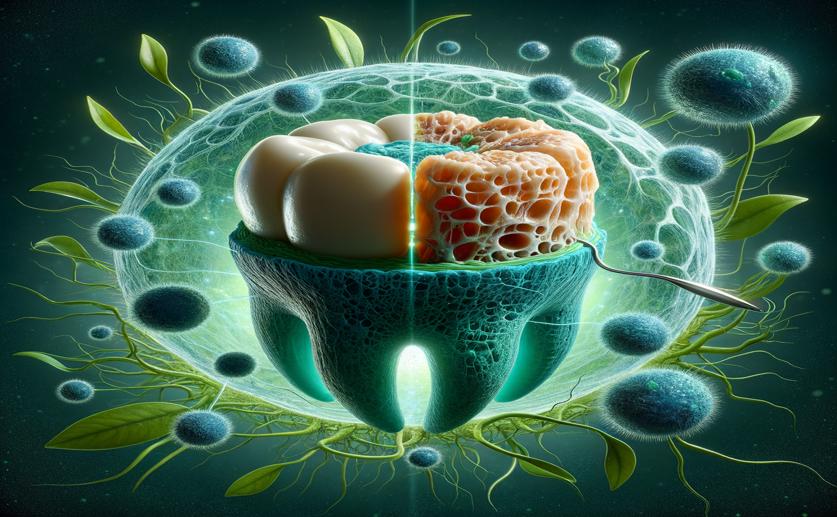
Plant-Based Material Helps Dental Stem Cells Grow into Bone Cells
Greg Howard
28th June, 2024

Image Source: Natural Science News, 2024
Key Findings
- The study by Dr. D.Y. Patil Vidyapeeth explored using decellularized spinach leaves as scaffolds for dental pulp stem cells (DPSCs)
- Spinach leaves were chosen for their unique veination patterns, which help create tissue-specific scaffolds
- The decellularized spinach leaves were non-toxic and supported cell adhesion, proliferation, and osteogenic differentiation of DPSCs
References
Main Study
1) Decellularized leaf-based biomaterial supports osteogenic differentiation of dental pulp mesenchymal stem cells.
Published 27th June, 2024
https://doi.org/10.1007/s11626-024-00937-9
Related Studies
2) Decellularized amniotic membrane Scaffolds improve differentiation of iPSCs to functional hepatocyte-like cells.
3) Plant-Based Scaffolds in Tissue Engineering.
4) Customizing the Shape and Microenvironment Biochemistry of Biocompatible Macroscopic Plant-Derived Cellulose Scaffolds.
5) Scaffolds and cells for tissue regeneration: different scaffold pore sizes-different cell effects.



 4th May, 2024 | Jim Crocker
4th May, 2024 | Jim Crocker